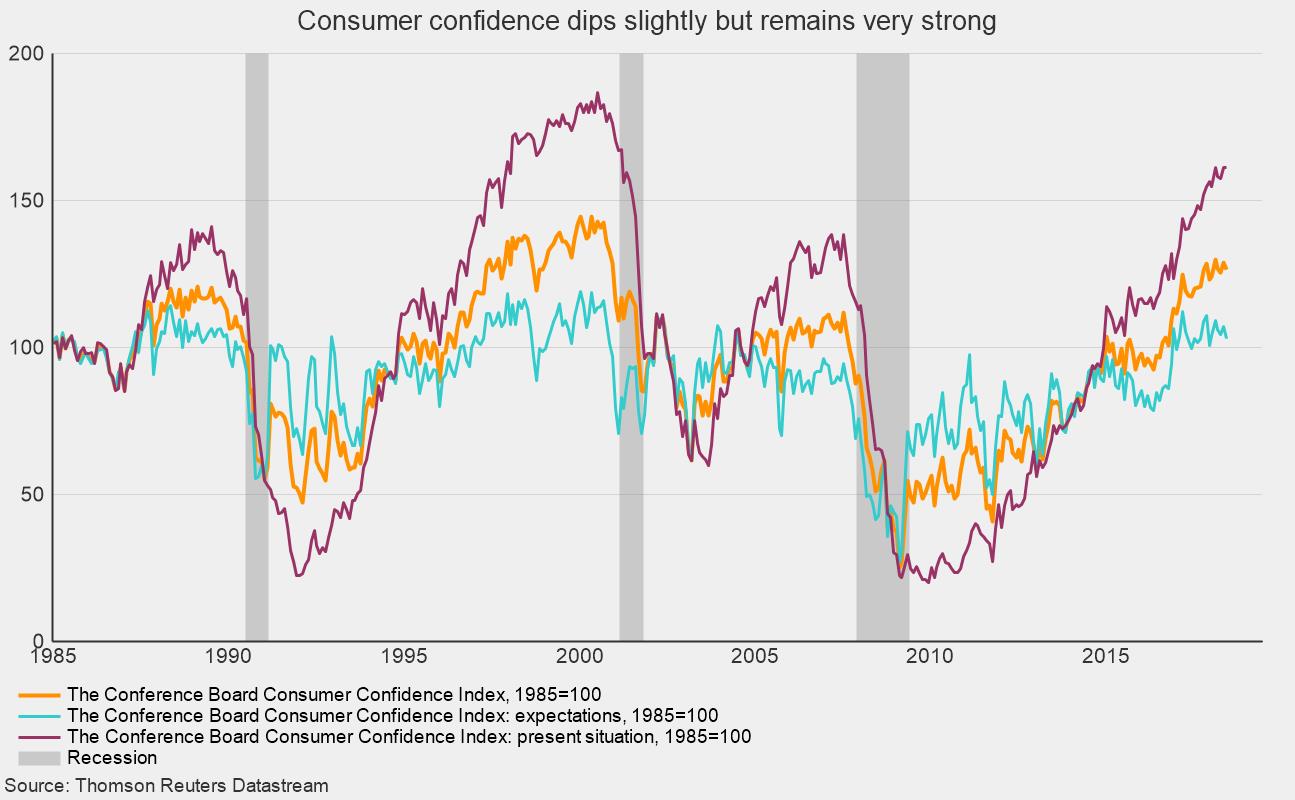Consumer Confidence Ticked Down in June but Remains at a Very High Level
The Consumer Confidence Survey from The Conference Board shows consumer attitudes pulled back slightly in June relative to May but remain at historically favorable levels overall. The Consumer Confidence Index fell to 126.4 in the latest reading, down from 128.8 in May.
Of the two major components, the present-situation index decreased from 161.2 to 161.1 while the expectations index fell to 103.2 from 107.2 last month. Despite the drops, the overall index and the present-situation index are above the peaks of two of the past three economic expansions, only falling short of the levels achieved during the expansion of June 1991 through March 2000, while the expectations index appears to be plateauing about in line with previous cycle highs (see chart).
The weakness in the expectations component was largely due to less favorable business-conditions expectations. The percentage of consumers expecting business conditions to improve fell to 21.4 percent from 23.3 percent. At the same time, those expecting business to worsen increased to 9.8 percent from 7.8 percent. According to Lynn Franco, director of economic indicators at The Conference Board, “Consumers’ assessment of present-day conditions was relatively unchanged, suggesting that the level of economic growth remains strong. While expectations remain high by historical standards, the modest curtailment in optimism suggests that consumers do not foresee the economy gaining much momentum in the months ahead.” One potential source of softening expectations may be the escalating tariffs, and the trade policies more broadly, being implemented by the Trump administration.
Consumers’ outlook for the labor market, however, improved slightly in the latest month. The percentage of consumers expecting more jobs in the months ahead increased to 20.0 percent from 19.7 percent, while the percentage expecting fewer jobs decreased to 12.6 percent from 13.1 percent.
One key source of support for the strong levels of confidence in the present-situation index is the robust labor market. Consumers’ assessments of current labor-market conditions did tick down slightly but remain at very favorable levels. According to the survey, the percentage of respondents reporting jobs are hard to get fell from 15.6 in May to 14.9, the lowest since July 2001, though it is still above the all-time low of 9.6 in 2000. Conversely, the percentage of respondents saying jobs are plentiful came in at 40.0, down from 42.1 in May. The gap between these two labor-market sentiment measures is sometimes called the labor-market gap. The labor-market gap came in at 25.1 in June, down slightly from the cycle high of 26.5 in May.
Overall, despite a slight dip in June, consumer confidence remains at historically favorable levels, supported by a robust labor market, suggesting ongoing economic expansion in the short term. The plateauing of consumers’ expectations, which may reflect escalating trade tensions, may be a small early-warning sign.






